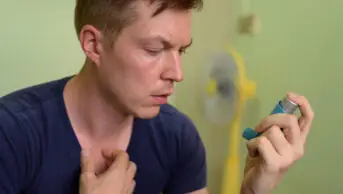There are up to 800,000 species of microalgae, of which only around 50,000 have been described. These represent an untapped source of chemical compounds, potentially including antibiotics.
Over 15,000 novel compounds originating from algal biomass have already been chemically determined, including products such as carotenoids, antioxidants, enzymes, polymers, toxins and sterols. Although no commercially available antibiotics from microalgae are available, the authors of an article published in Phycologia suggest that the range and variety of microalgae, as well as their antibacterial activity and ability to survive and adapt to a wide range of environments, could make them an important source of antibiotics.
Secondary metabolites produced by photosynthetic micro-organisms such as microalgae, with molecular weights of less than 3,000 daltons, have the potential to affect other organisms and could therefore have antibiotic potential. And metabolites from microalgae are extremely diverse, with some being successfully commercialised. Microalgae are known to produce alkaloids, indoles, macrolides, peptides, terpenes, acetogenins, phenols, fatty acids and volatile halogenated hydrocarbons. Some of these chemicals have been associated with growth inhibition of pathogenic micro-organisms.
Systematic screening of algae for antibiotics began in the 1950s, but most studies focused on macroalgae (seaweeds), due to their ready availability and their already being a source of bioproducts such as food, agar, alginates and iodine. However, crude extracts from different species of eukaryotic microalgae have shown effectiveness against both gram-positive and gram-negative bacteria, as well as Mycobacterium tuberculosis. This suggests potential for producing broad-spectrum antibiotics, while other studies have also shown specific inhibitory activity against gram-positive bacteria, including meticillin-resistant Staphylococcus aureus (MRSA).
A study evaluating the antibacterial activity of microalgae that survive extreme temperatures in desert soils found that selected strains of cyanobacteria (blue-green algae) strongly inhibited bacterial growth, particularly of Shigella sonnei. In another study, cyanobacteria from a hot spring in Iran were particularly effective against gram-positive bacteria.
Various properties of microalgae offer advantages as potential antibiotic producers: they are extremely evolutionarily and phylogenetically diverse; they can be grown in bioreactors on a large scale and in inexpensive media; they can be stored by cryopreservation; and they are able to produce a wide range of valuable organic compounds that can be manipulated by environmental changes.
One of the main challenges in producing antibiotics from these sources is likely to be the small concentration of compounds extracted. But if the compound has good potential, chemical synthesis may be a feasible option.


